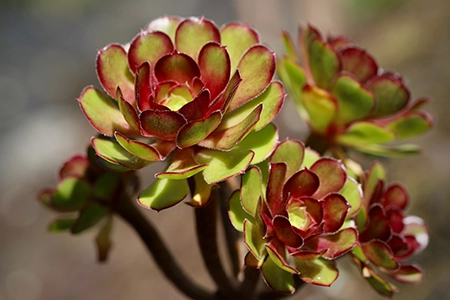This year, we’ve experienced an unusually warm autumn, which may have lulled some gardeners into a false sense of security. While the temperatures have been mild, frost is just around the corner, and it’s vital to prepare your garden now. Mulching is one of the most effective ways to protect your plants and ensure a healthy garden through the winter months. This blog will cover everything you need to know about mulching, including its history, benefits, types, and how to do it right.

Why Mulching Matters
Mulching involves placing a protective layer of material over the soil surface around your plants, offering multiple benefits for your garden. It insulates plant roots from extreme temperatures, keeping the soil warmer during frost, and helps retain moisture by reducing evaporation, which is particularly useful in dry winters.
Mulch also suppresses weeds by blocking light from reaching the soil and, if organic, breaks down over time to enrich the soil with nutrients. By mulching now, you provide your plants with essential protection to thrive when the cold weather arrives.

A Brief History of Mulching
The practice of mulching is as old as agriculture itself, with evidence of its use dating back centuries. Across the world, early farmers discovered that covering the soil with organic materials could significantly enhance the health and productivity of their crops. Indigenous farmers in North America used straw, leaves, and other natural debris to insulate the roots of their plants and improve soil fertility
By the 19th century, the agricultural revolution brought scientific attention to the practice. Researchers began to systematically study mulching’s effects, confirming its ability to regulate soil temperatures, improve water retention, and boost crop yields. These findings solidified mulching’s role as a vital tool for both small-scale gardening and large-scale farming.
Over time, different cultures adapted mulching techniques to their specific climates and resources. In tropical regions, coconut husks and banana leaves were used, while European farmers favoured straw and manure. The Industrial Revolution brought advancements in materials and methods, introducing inorganic mulches like gravel and plastic sheeting for commercial agriculture.
Today, mulching remains a cornerstone of sustainable gardening and farming practices. It has evolved to suit modern needs, with gardeners using everything from bark chips and compost to biodegradable fabrics.

Different Types of Mulch
- Bark Mulch
- Compost
- Stone Mulch
- Mushroom Compost
Bark Mulch
Bark mulch is made from shredded or chipped bark, often sourced from pine or cedar trees. It’s an excellent choice for large flower beds, trees, and shrubs, as it provides long-lasting coverage and helps suppress weeds while insulating roots. However, bark mulch is less suitable for small raised beds or vegetable gardens because it can make planting and replanting more challenging.
Compost
Compost is a nutrient-rich mulch made from decomposed organic matter, such as garden trimmings and kitchen waste. It’s ideal for vegetable gardens and flower beds where improving soil fertility is a priority. While compost enriches the soil and retains moisture effectively, it does break down quickly and needs to be replenished more frequently than other mulch types.
Stone Mulch
Gravel or stone mulch consists of small stones or pebbles, making it an excellent choice for rock gardens, pathways, or areas with poor drainage. Unlike organic mulches, it doesn’t break down to add nutrients to the soil, but its durability and ability to suppress weeds make it a low-maintenance option. However, it can limit flexibility in changing garden layouts over time.
Mushroom Compost
Mushroom compost is a byproduct of mushroom farming, made from a blend of organic materials such as straw, manure, and gypsum. It’s an excellent mulch for enriching soil and retaining moisture in flower beds, vegetable gardens, and even around young shrubs. However, mushroom compost is slightly alkaline, so it’s not ideal for acid-loving plants like blueberries or rhododendrons. When applied as a top layer, it also suppresses weeds while improving soil structure over time.

Plants That Need Mulching the Most
Certain plants are particularly vulnerable to frost and require mulching for extra protection during the wintertime. Below is a list of the top three that are commonly found in gardens across the UK and will need to be mulched as soon as possible.
Roses
Their woody stems, thorns, and clusters of colourful blooms, are prime examples. Applying bark mulch around the root crown provides excellent insulation and protects these elegant flowers from harsh winter conditions.
Hydrangeas
Known for their large, rounded flower clusters in shades of blue, pink, or white, also require extra care. Using compost as a mulch around the base of hydrangeas not only insulates their roots but also improves soil fertility, gives them the nutrients they need to thrive come spring.
Strawberries
Easily identified by their low-growing habit, bright red fruit, and delicate white flowers, are particularly susceptible to frost. A layer of straw or compost is ideal for covering their crowns, helping to retain moisture and providing critical protection from freezing temperatures.

Plants That Need to Be Lifted and Stored Indoors
Some tender plants cannot survive winter frosts, even with the best mulching! Below are some of the plants that you may find in your garden which need to be lifted before the arrival of the colder weather.
Dahlias
Known for their vibrant and showy blooms, require careful handling once the first frost hits. To preserve them, dig up the tubers, clean off the soil, and store them in a cool, dry place, such as a garage or shed, where they will remain dormant until spring.
Cannas
With their bold, tropical foliage and striking flowers, are another frost-sensitive plant. After lifting the rhizomes, store them in slightly damp peat moss or vermiculite to prevent them from drying out during the winter. Keeping them in a frost-free location ensures they are ready to flourish again in warmer months.
Gladioli
Admired for their tall spikes of colourful flowers, also need attention as temperatures drop. Carefully lift the corms from the ground, allow them to dry completely, and store them in a cool, frost-free area. Proper care ensures these plants can be replanted for another stunning display next year.
Aeonium arboreum
A stunning succulent with rosettes of green or dark burgundy leaves, cannot tolerate frost and must be moved indoors as temperatures decline. These plants thrive in bright, cool spaces like conservatories or sunny windowsills, where they can continue to grow throughout the winter.
Citrus trees
Lemon, lime, or orange trees, are highly sensitive to frost and should be brought indoors or into a greenhouse before the first frost. Place them in a bright location and reduce watering during winter to mimic their natural dormant period. Proper care ensures they remain healthy and productive when outdoor temperatures rise again.

A Guide to Mulching your Garden
Mulching your garden is an essential step in protecting plants and enhancing soil health, especially as the colder months approach. Following these steps will ensure you get the most out of your mulch:
1. Prepare the Area
Start by clearing the area where you’ll be applying mulch. Remove any weeds, debris, or fallen leaves to give your plants a clean and healthy base. This ensures that weeds don’t compete with your plants for nutrients and prevents potential pests or diseases from being trapped under the mulch.
2. Water the Soil
Before applying mulch, water the soil thoroughly. Moist soil helps the mulch retain water, which is essential for your plants’ hydration, especially in dry winter conditions. Skipping this step can reduce the effectiveness of mulch in maintaining consistent soil moisture levels.
3. Apply the Mulch
Spread a layer of mulch about 2–3 inches thick evenly around your plants. Be careful not to pile mulch directly against plant stems or trunks, as this can cause rot or attract pests. Keep the mulch slightly away from the base of plants to allow for proper air circulation and prevent fungal growth.
4. Tidy the Edges
A neat mulch layer not only looks more appealing but also prevents it from spilling onto paths, lawns, or other garden features. Use a rake or your hands to define clean edges and maintain a polished appearance in your garden.
5. Monitor and Adjust
Once the mulch is applied, keep an eye on it throughout the season. Check periodically to ensure it hasn’t been displaced by wind, rain, or wildlife. If the mulch starts to compact or break down, gently loosen it with a rake or add fresh mulch to maintain the desired thickness and effectiveness.

When and How to Remove Mulch
Timing is crucial when it comes to removing mulch, as doing it too early can expose plants to late frosts, while waiting too long may smother new growth. Begin checking your garden in early spring once the risk of frost has passed, and gently rake back the mulch to allow plants to breathe and grow.
However, don’t remove it all, leave a thin layer to help retain soil moisture and suppress weeds as the weather warms. If you’ve used organic mulch, consider replenishing it to maintain its effectiveness, as it may have partially decomposed over the winter months.

Final Thoughts
Mulching is an essential step in protecting your garden from winter’s challenges. While the warm autumn may have delayed your preparations, now is the time to act before frost sets in. By understanding the types of mulch, the plants that need it most, and how to apply it correctly, you’ll be ensuring your garden stays healthy and ready for spring growth.
At Norfolk Garden Services, we offer expert advice and assistance with mulching and other seasonal garden maintenance tasks. Contact us today to get your garden winter-ready!
Further Reading
Winter Perennial Protection: Shielding Your Garden from the Cold
Pruning Roses – Guide to Winter Pruning
What to Plant in December: Plant Cyclamens for Simplistic Beauty







